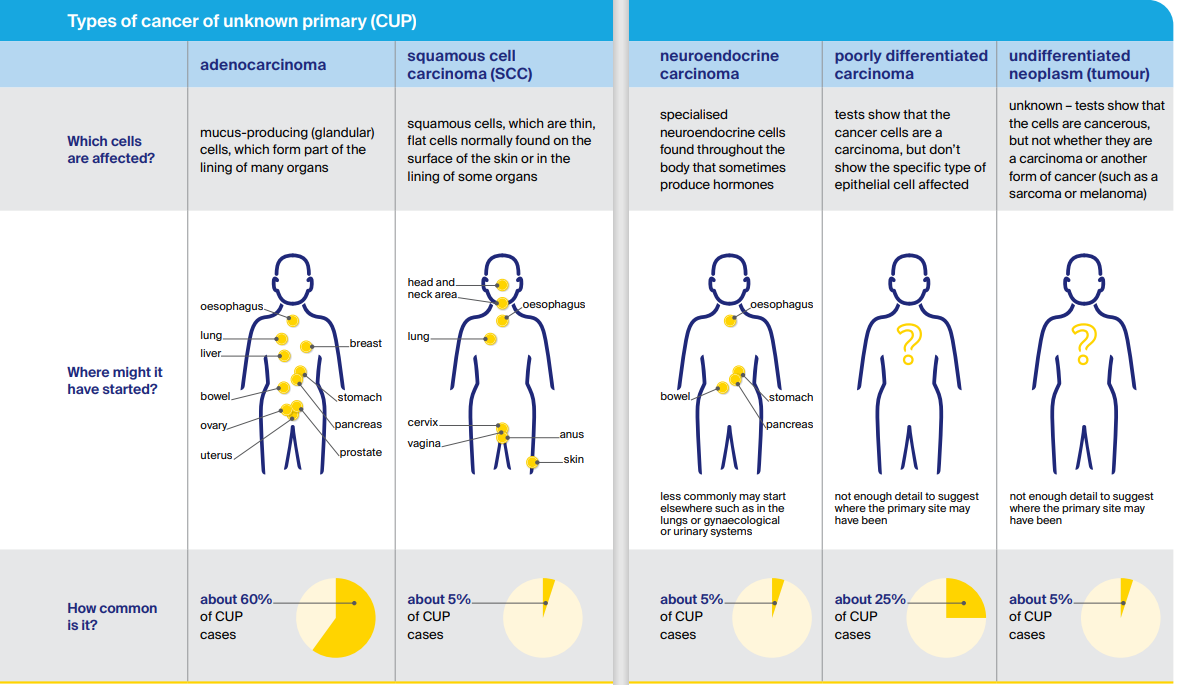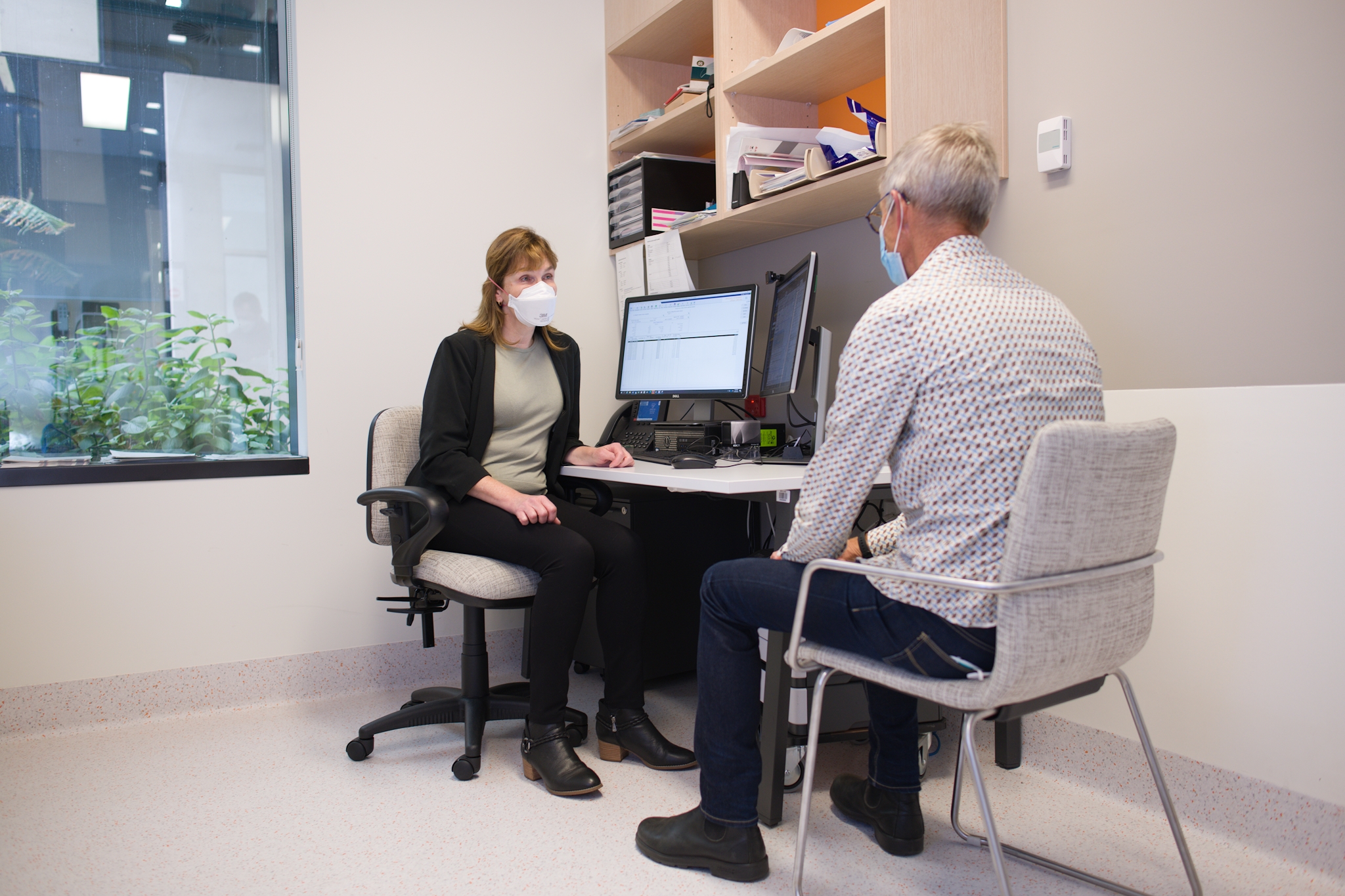Like a detective, doctors will try to learn as much as possible about your medical history, your risk factors for cancer, symptoms, and the spread of cancer. The type of CUP is determined by doctors trying to identify or strongly suspect where the (primary) cancer started in the body. The location of the primary cancer helps to determine the most appropriate treatment options, as some cancer types are predictable in their disease pattern.
Most cancers originate from epithelial cells, which are found in the skin and the outer lining of internal organs. More specifically, CUP types are:

There are several reasons why your doctors might not be able to find the primary cancer.
These include:
Your doctor may have other reasons to explain why the primary cancer cannot be found. Even if the primary cancer cannot be found, treatment options may still be available based on the most likely cancer diagnosis.
The three most commonly diagnosed cancers in Australia as of 2024 are prostate cancer, breast cancer and melanoma of the skin. By comparison, CUP is the 14th most commonly diagnosed cancer type. Although CUP accounts for only 1-2% of malignancies, it is the seventh most common cause of cancer deaths in Australia.
Here are the links to other information pages to learn more about different aspects of CUP. You may also use the quick links on the right side of the page to navigate.

Most people are diagnosed with cancer of unknown primary (CUP) after they have symptoms or become unwell. Some people may be diagnosed during tests for another health condition. When cancer is suspected, you might be referred for tests or to a specialist.

The treatment you have depends on a number of things, including where the cancer is and your general health. A team of doctors and other professionals discuss the best treatment and care for you. The main treatment for Cancer of Unknown Primary is cancer drugs, most commonly chemotherapy. You may also have radiotherapy to help to control your symptoms and hormone therapy.




